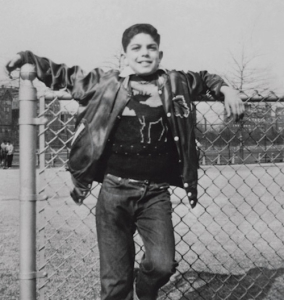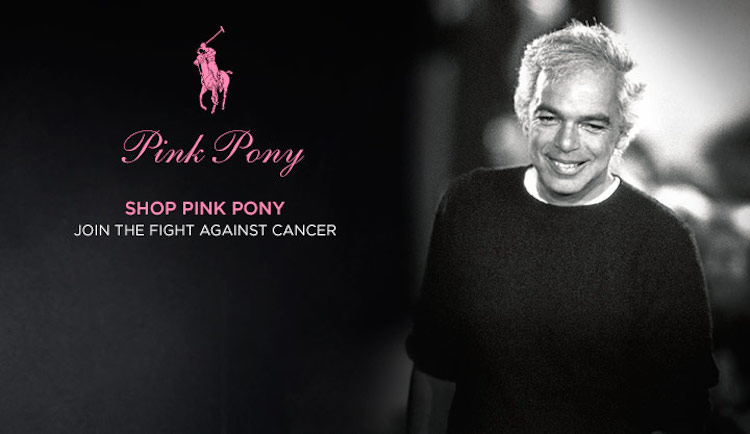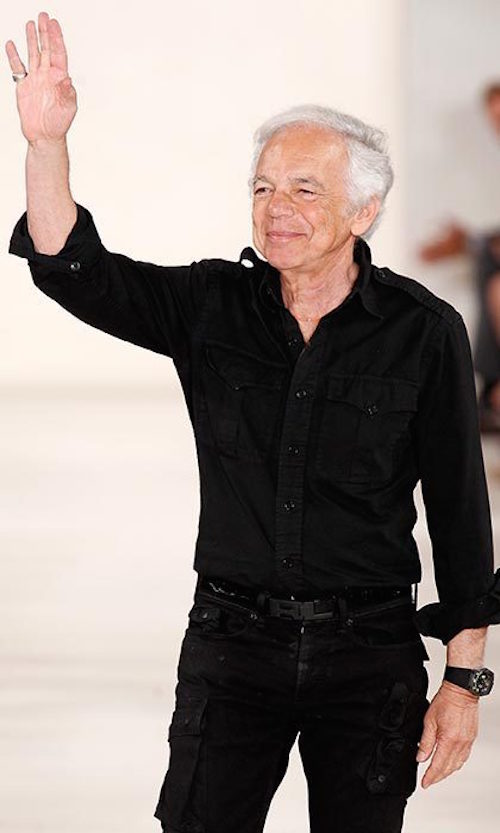The story of Ralph Lauren is the archetypal American Dream. However, October marks the beginning of a new era for global fashion, with the boy from the Bronx stepping down as CEO of his iconic high-end label. The brand, worn by celebrities and common folk alike, will take a new direction under the tutelage of Stefan Larsson.
Walking down New York City’s Madison Avenue, you will eventually reach the corner of East 72nd Street. Here you are confronted by the majestically imposing Rhinelander Mansion, a building surpassing a century in age, but showing no signs of fading into oblivion.
You see, since 1986, the castle has housed the flagship store of one of America’s finest and most recognisable fashion labels. If you have ever seen the ballboys and girls at tennis’ US Open or the 2012 Olympic and Paralympic teams, you have seen the tip of Ralph Lauren’s vast iceberg.
His influence spans not only the fashion world, but wider society. The word “polo” is no longer synonymous with a sport played by the affluent; rather, we associate it with the American fashion label founded by the son of Soviet, Jewish immigrants. Heck, a quick Google search of the word “polo” springs suggestions to Ralph Lauren-related websites.
The story of Ralph Lifshitz, as he was known until changing to “Lauren” at 16, is an archetypal rags-to-riches journey, filled with an inspiring combination of rejection and unbridled ambition. Looking at Lauren’s renowned collection of more than 70 cars today, you wouldn’t suspect he came from such humble beginnings.
Born in New York City in 1932 as the youngest of four boys, the 2010 recipient of France’s highest decoration, Legion d’honneur, was destined for greatness — but it wasn’t always that way. He grew up in the Bronx, frequently skipping school to immerse himself in movies of the time, while he wore his older brothers’ hand-me-downs. During his time as a clerk at Brooks Brothers, his European-styled ties were continuously rejected for going against the status quo — they were twice the size of then-trendy American ones.
How Brooks Brothers would lament this decision. USD $7.5b worth of regret, to be precise.
In 1971, Beverly Hills staged the opening of Lauren’s debutant store — the first of over 140. Nowadays, the idea of men and women donning polo- and Ivy League-inspired clothing is a given, however this was a product of Lauren’s ingenuity. The iconic, unisex Polo shirt and groundbreaking womenswear were designed in 1972, and in 1981 the company ventured overseas, opening its first international store in London’s West End.
Today, the label has diversified into an umbrella of unique lines that all maintain Lauren’s signature elegance. There are 5 lines for menswear, ranging from their piece de resistance known as Purple Label, to their iconic Polo Ralph Lauren, that is revered for its Ivy-League look while still being affordable. It’s a similar story for the womenswear. Their lines vary from Black Label, which as the name suggests is grounded in its simplicity, to its rustic line known as Denim & Supply.
With such a vast range, it’s no surprise that in 1970, Lauren was awarded the holy grail of fashion — the Coty Award for men’s fashion. This cemented his place as one of fashion’s stalwarts. Further testament to Lauren’s proficiency as a designer can be seen in Jack Clayton’s 1974 film, The Great Gatsby. Clayton chose Lauren to design the clothes of the film’s male cast, elevating the brand to fashion’s upper echelons.
Rewind back to 1970 and it seems fortune really does fortune the brave. Beau Brummell of Bloomingdale’s took a chance on Lauren, an unknown entity whose fashion qualifications were null. Their big break came when Neiman Marcus ordered 1200 of Lauren’s unique ties. From here, Lauren began working on a full, Ivy League-inspired menswear line.
The collaboration almost fell on its head before it began— Bloomingdale’s wanted the line under their name, and in a sign of Lauren’s tenacity, he refused. Months later, Bloomingdale’s returned to Lauren, offering space to sell his ties under his now famous trademark. Following profits of $100,000 in the first year, Bloomingdale’s offered Lauren a boutique within its store — the first time they had ever done this. In 1969, the eponymous Polo Ralph Lauren was born.
An interesting moniker, no doubt, however, by no means bereft of capturing the brand’s essence. Lauren wanted to express the elegance of his clothes, while catching people’s attention. What better way than to complement the stylish sport — polo — with an endearing, American name?
Lauren is not only revered for his fashion, but also his contribution to American society. In 1999, he became the largest sole contributor to the Smithsonian Museum’s Star-Spangled Banner Reservation Project, contributing upward of USD $13m to the muse of America’s national anthem.
Through his label, he began the Pink Pony Campaign, a worldwide breast cancer initiative; the Ralph Lauren Children’s Literacy Program; and the American Heroes Fund, providing scholarships to children of victims of 9/11. These are but a few of his philanthropic pursuits, displaying the same integrity found in his clothing.
Of course, what sort of label would Ralph Lauren be without its odd controversy?
The outfitter was criticised for its 2012 Olympic and Paralympic uniforms, not so much for their style, but their apparent betrayal. Alas, in a case of wry irony, they were manufactured in China. Never one to rest on his laurels, Lauren rectified this error — the 2014 Winter Olympic Team uniforms were made locally.
The label’s 2014 holiday ad campaign for its RLL caused an uproar for its apparent tastelessness, depicting Native Americans in their clothing. While cultural appropriation is not new for Ralph Lauren, often a theme in their fashion shows, this was perhaps a step too far. To their credit, they pulled the ads shortly after.

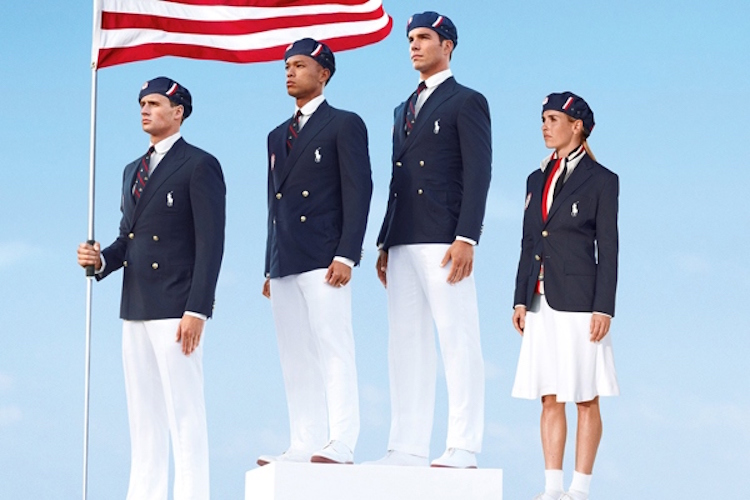
At the end of each Ralph Lauren fashion show, Lauren walks down the runway, his sparkling white hair complementing his signature, endearing smile. This is something we hardly give a second thought to, yet his appearance in 1987 could have been his curtain call.
Contrary to his usually jovial appearance, Lauren was holding back tears as he waved his thanks to the audience. Later, it was revealed he had a benign brain tumour that needed to be operated on. Thankfully, the operation was successful, however at such a pivotal time in the brand’s career, one cannot help but wonder what trajectory the company would have taken in Lauren’s absence. Perhaps it would have still been successful, perhaps not. Irrespective of this, the brand has since consistently risen, now a regular fixture in global wardrobes.
2015 is an interesting time for Lauren as his brainchild faces new challenges. He recently stepped down as CEO, appointing former global president of H&M and Old Navy, Stefan Larsson, as his successor. He penned a letter to all his employees, and in true Lauren fashion, found opportunity in an otherwise turbulent time, stating: “I am not stepping down, nor am I stepping back. I am stepping up”.
In any other circumstance, the ceding of a CEO would signal the end of an era. However, it’s safe to say Ralph Lauren is here to stay. Larsson has over 15 years of experience in the industry, transforming Old Navy from a throwaway fashion label into a respectable, pioneering brand.
What’s more, the iconic American label is competing in an industry that is inundated by cheaper labels such as Zara, H&M and UNIQLO, fed by consumers’ desires for fast-fashion. While profits have fallen by 2%, investors responded favourably to Larsson’s appointment, epitomising the label’s resilience and esteem in which it is held.

In another sign of Lauren’s ingenuity, he started the Ralph Lauren magazine in 2007, the first of its kind. More than just a catalogue for his company, the website publishes standalone articles not limited to fashion. For example, their September issue has Oscar Winner Davis Guggenheim and Keith Richards’ daughter, Alexandra. As expected, the blog commands a monthly readership estimated to be in the millions.
Even with Lauren no longer at the helm, great things are destined for Ralph Lauren. The transition has happened smoothly and 50 years’ worth of endeavours are coming to fruition.
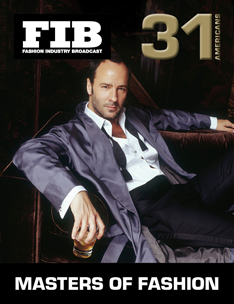 If you would like to read more on Lauren and other American designers, check out Fashion Industry Broadcast’s MASTERS OF FASHION Vol 31 – Americans.
If you would like to read more on Lauren and other American designers, check out Fashion Industry Broadcast’s MASTERS OF FASHION Vol 31 – Americans.


